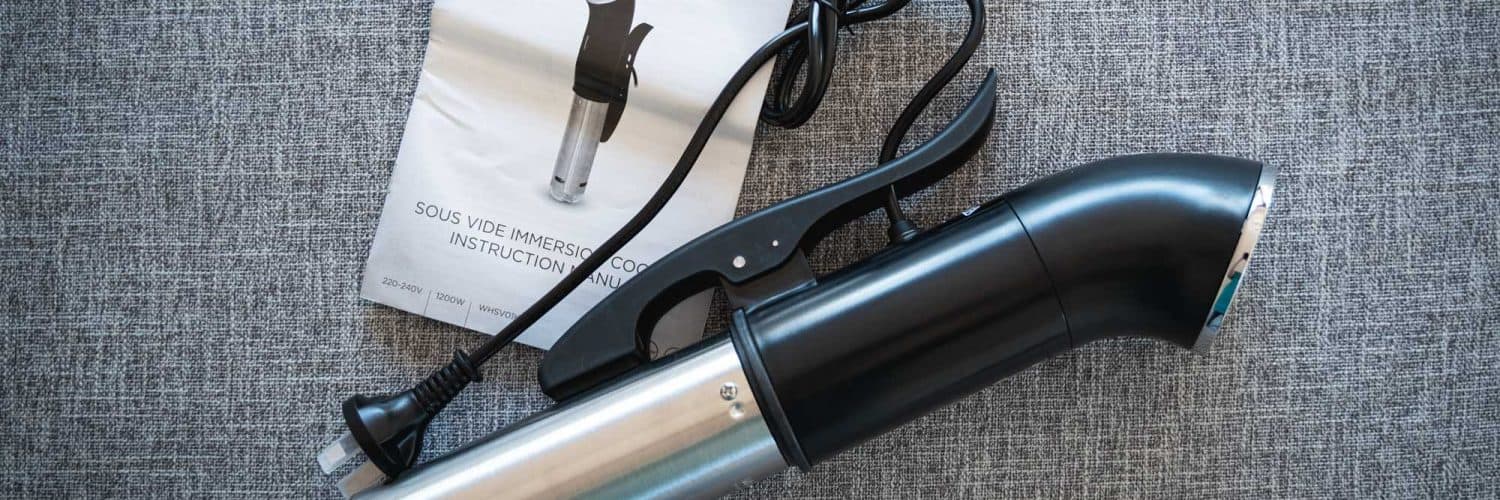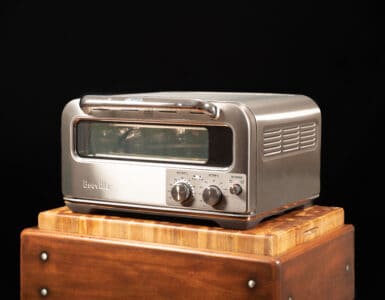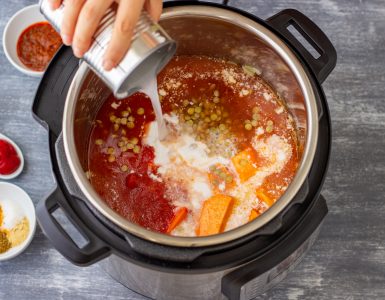This page may contain affiliate links. If you make a purchase through one of these links, we may earn a commission at no extra cost to you.
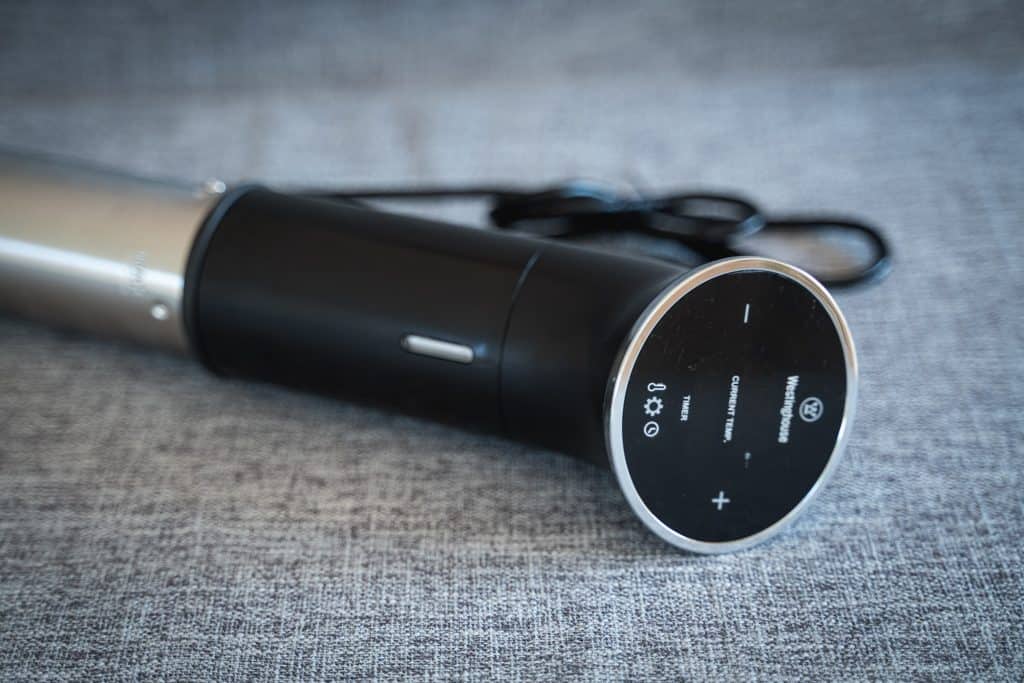
Reviewing a sous vide immersion circulator is a little bit like reviewing a car. The fact that it will get you from Point A to Point B is taken for granted; it’s just a question of how smoothly it handles the journey. The Westinghouse sous vide immersion circulator will get you from raw food to a nicely sous vide dish, the journey isn’t an enjoyable one.
In fact, we were so disappointed with this machine that we aren’t even going to include an affiliate link to it. We’ll never recommend products that we dislike for the affiliate income, and that one falls squarely into that category.
Table of Contents
Quick Summary/Overview
The Westinghouse sous vide immersion circulator falls into the middle of the pack in terms of pricing. It’s not the cheapest option out there, but it’s (thankfully!) not the most expensive either. Primarily produced for the Australian and New Zealand markets, this machine strikes us as being overpriced for its quality most likely due to the local lack of competition.
In our first test use, we were thoroughly disappointed with this device from the moment that we opened the package all the way through to the automatic shutoff when the timer was up a few hours later. And our feelings haven’t changed in subsequent tests.
If you’re in most of the world, you probably won’t encounter this particular device unless you go looking for it (and with so many great alternatives out there, why would you?). If you’re in Australia or New Zealand, we recommend ordering another sous vide immersion circulator online instead. It may be more expensive and take a bit longer, but it’s worth it. For our recommendations and top picks, check out our list of the best sous vide immersion circulators.
(Of course, be careful to order one that’s compatible with your power; many are designed for 110V power and won’t work in Australia or New Zealand without an expensive transformer. Anova, at least, makes 220V version of their immersion circulators.)
First Impressions
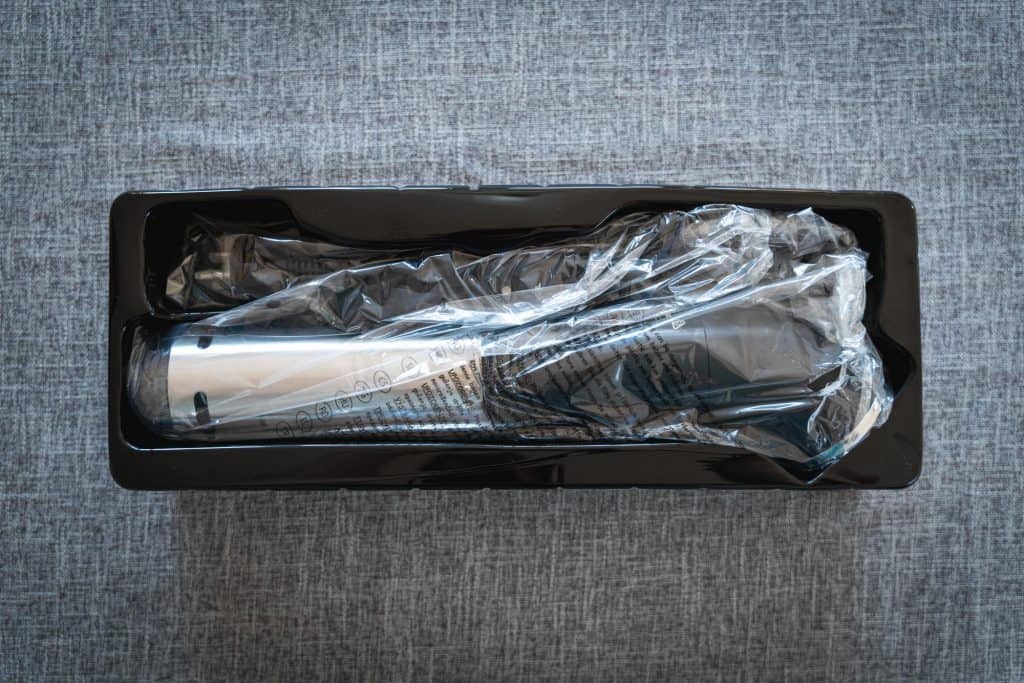
Unfortunately, our experience with the Westinghouse sous vide immersion circulator didn’t start off well. The packaging was fine, but not amazing—and apparently not good enough to protect the screen!
Straight out of the package, the screen already had some noticeable scratches as well as one large ding, as you can see in the pictures. As far as we can tell, this is simply from insufficient packaging, as there are no signs that the device has previously been used.
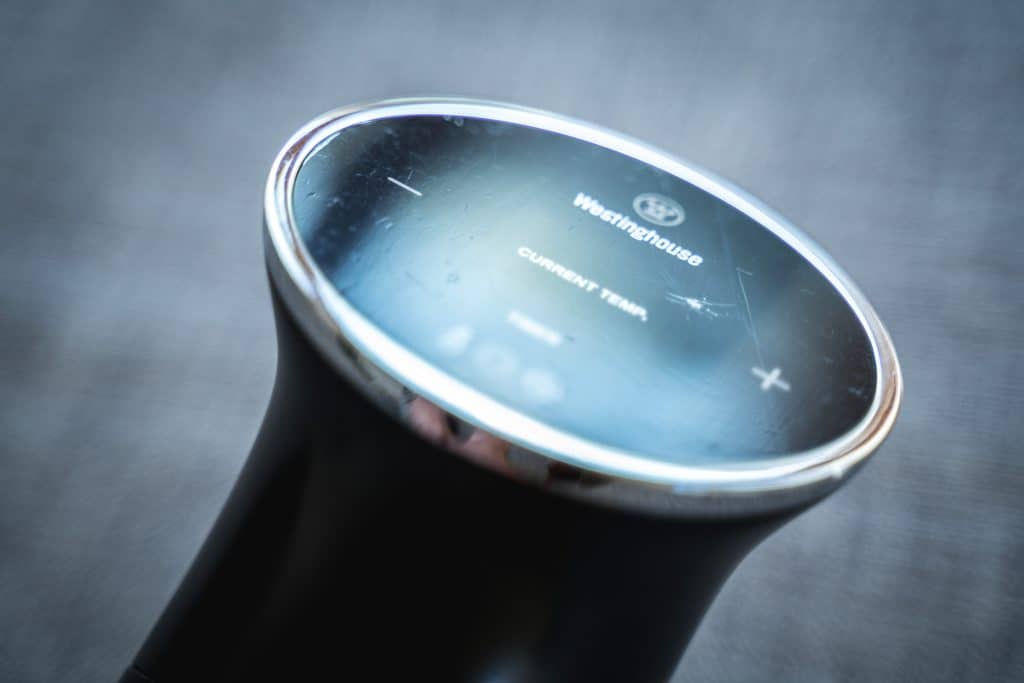
The device itself (other than the issues with the screen) looks fine; it’s hefty and bulky, but not overly so. The quality feels decent, although I prefer a screw-on attachment to a clip simply because we’ve heard so many more reports of clips breaking.
Starting It Up
The instruction manual was disappointingly vague, but I wasn’t too bothered. After all, it’s not like I’ve never used a sous vide machine before! Just turn it on, set the time and temp, and go, right?
Wrong. Well, sort of right, but it wasn’t as simple as expected. As you can see in the picture, the manual has a diagram showing which part of the screen has which button. The only problem is that the diagram is black, and the lines indicating the buttons’ locations are also… you guessed it… black.
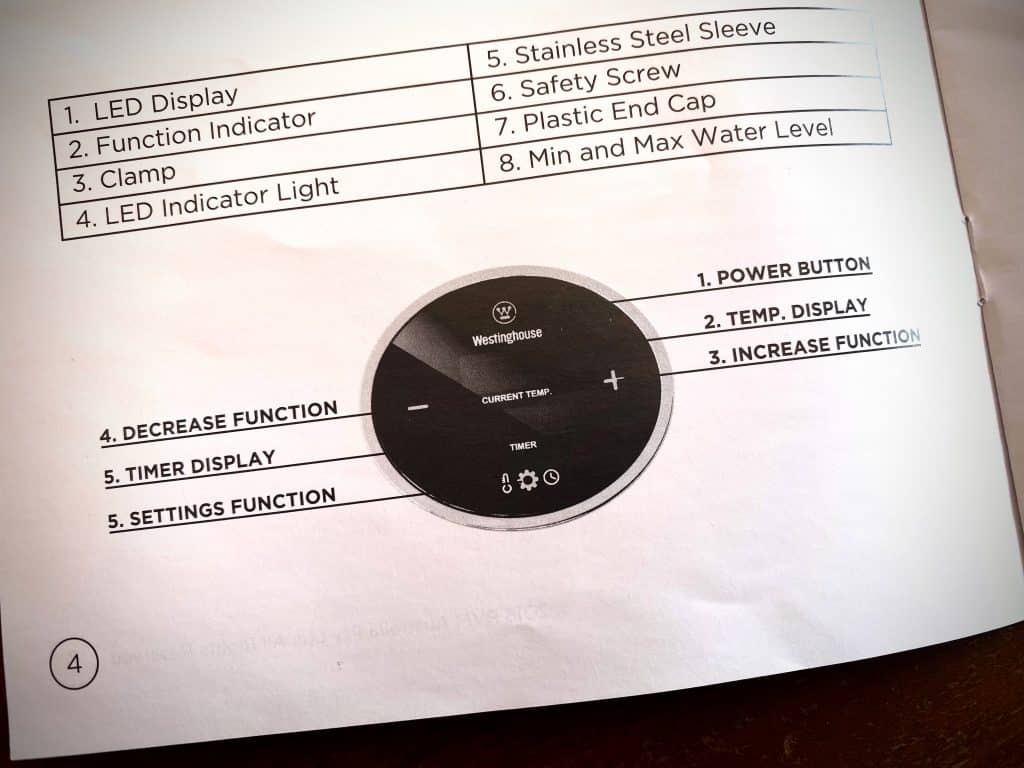
Can you see the issue with using black lines on top of a black image to indicate locations? If so, you’re already doing better than whoever at Westinghouse came up with this manual.
After a moment of frustration in thinking that the “Power” button was in the top right corner of the screen (you know, where the line points before it blends invisibly with the background), I managed to figure it out and get the machine going.
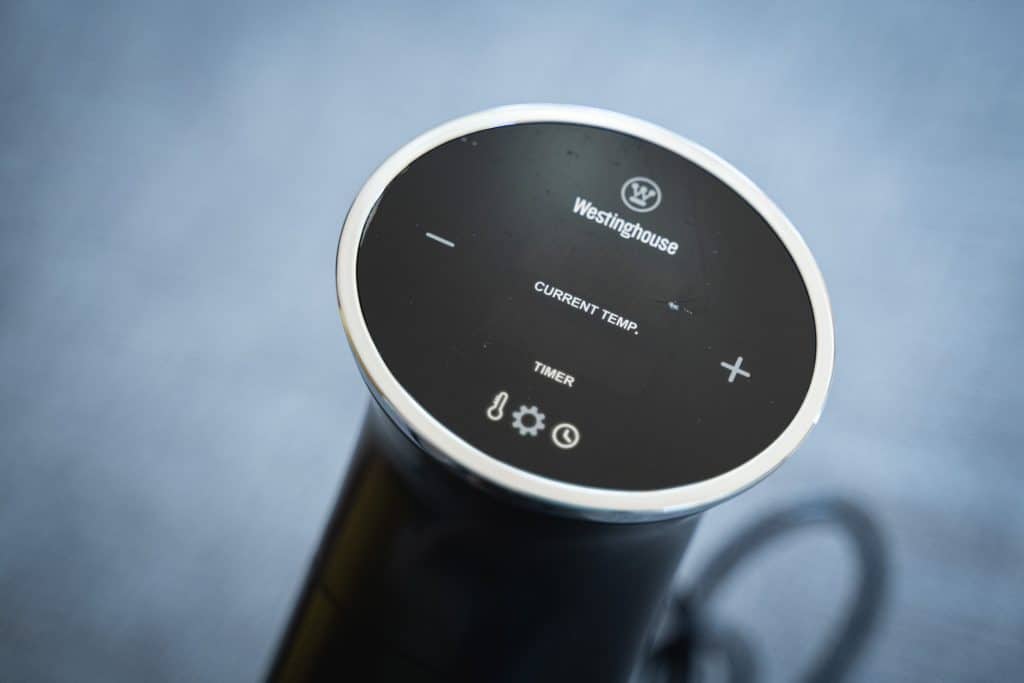
The next problem was with the temperature gauge. It immediately started going up at an almost impossible rate before reaching the set temperature… at which point it came back down to the starting water temperature and then started climbing again, more realistically this time. Not a big deal, of course, but a bit odd. (It hasn’t repeated this behavior in our subsequent tests.)
The Cooking Process
There’s not much to say about the actual cooking process for this device. It held its temperature steadily, although our independent thermometer indicated that it was running about 2° Fahrenheit (about 1° Celsius) high. This isn’t a big deal for most foods, but it’s definitely more than I’d prefer. The fact that the PolyScience CREATIVE sous vide is precise to within less than one tenth of a degree Fahrenheit (20 times better than the Westinghouse) makes it obvious that the technology for better precision is available.
My biggest issue came when the set cooking time was over. The machine beeped to notify us… and then turned off.
One of the great benefits of sous vide is that your food might be done in as little as 45 minutes, but might be able to sit in the water bath at the intended temperature for several hours after that. This means you have a lot of flexibility in deciding when you actually get your food out of the water bath and finish the dish.
If your machine shuts off when it finishes cooking, you don’t have this flexibility. And that ruins one of the highlights of sous vide cooking. You see, if the immersion circulator simply stops running, the water will then begin to cool off. For many sous vide preparations, there’s only a degree or two of difference between the intended cooking temperature and the food temperature “danger zone.”
Do you see the problem? If you happen to miss the notification that your food is ready, you run the risk of having it sitting in tepid water in the danger zone. We’re thoroughly unimpressed with the decision to have the circulator automatically shut off given the fact that sous vide cooking specifically allows for incredible flexibility of timing and doesn’t require you to deal with your food as soon as it’s done.
Putting the Westinghouse Sous Vide Immersion Circulator Through its Paces
How long does it take to heat 2 gallons (7.6 liters) of water from 65° F (18.3°C) to 140° F (60° C)? Approximately 18 minutes.
What happens when the water level falls below the minimum line while it’s running? The machine beeps once, flashes “Err” for error, and stops running. You need to add water and then restart it to get it going again.
What happens when the timer runs out? Does the device shut off or keep going? Much to our dismay, the device turns off. I talk more above about why this is such a problem, but in short, it can result in food sitting at an unsafe temperature.
How much does the water temperature fluctuate during a 4-hour cooking period? We found only a .4° F (.2° C) fluctuation over a test 4-hour heating period.
How accurate is the temperature? According to a separate thermometer that we’ve tested for accuracy, the Westinghouse runs about 2° Fahrenheit (about 1° Celsius) high.
Is it approved for commercial/restaurant use? No. The user manual states, “This appliance is intended for domestic use only and should not be used in a commercial environment such as a restaurant, hotel or hostel dining room.”
Other Comments and Considerations
- The included instruction manual is minimal, with only a basic time/temperature chart for common foods. Including a simple 10-page booklet of recipes would have been a nice addition. Of course you can find that information online easily, but it would have spoken well of the company to want to go a step further in helping new users.
- The silver part of the device picks up fingerprints astonishingly easily. As we were photographing it, we needed to wipe it down with alcohol every time we moved it to avoid unsightly fingerprints. Of course this doesn’t affect function, but if you love to keep your devices looking shiny and new, be aware that this one picks up marks easily. (Our test version at least didn’t look new out of the package anyway thanks to the damage to the screen.)
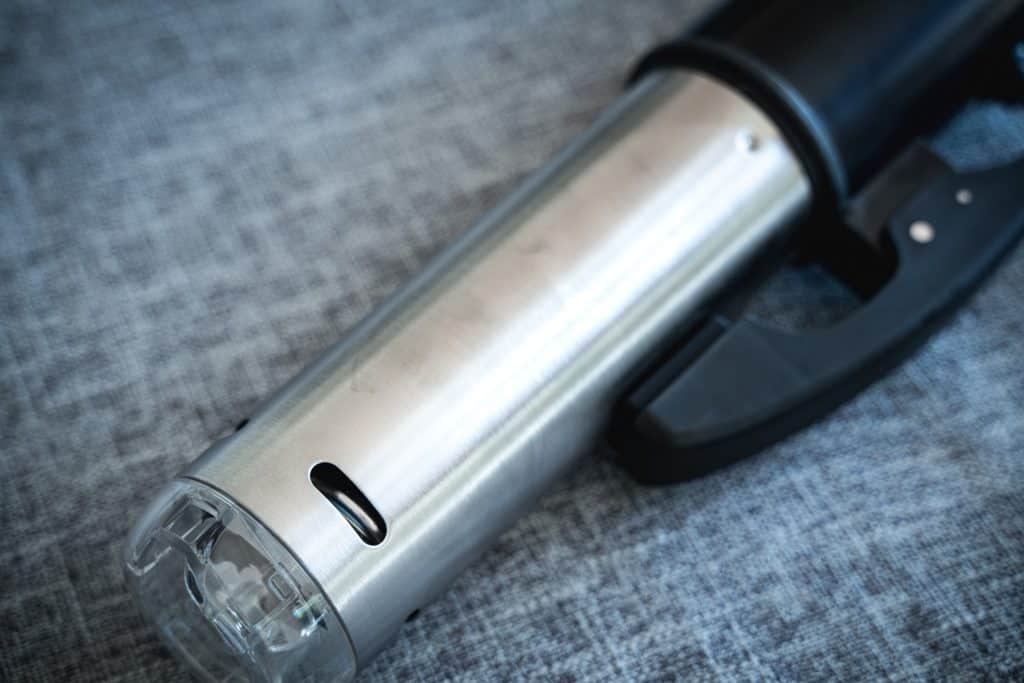
Pros & Cons
Audience
Unfortunately, we feel that the intended audience for this machine is Australians and New Zealanders who are forced to either buy one of a couple brands readily available, or else wait longer than average for a different option.
We checked on Amazon to find out just how long a different device might take to arrive. Our favorite home immersion circulator, the Anova Culinary Sous Vide Precision Cooker, would take two days to get to our home in California. The exact same device is estimated to take 18 days to get to a major city in New Zealand. If you’re in a hurry at all (and who isn’t when it comes to new cooking devices?), those extra 2+ weeks may be too long.
Given the long shipping time, additional shipping fees, and ready availability of the Westinghouse immersion circulators in stores, it’s clear why an Australian or New Zealander might choose to buy the Westinghouse. If you possibly can, though, we really recommend waiting the extra time and paying the shipping costs for a better option. Just make sure you choose one that’s compatible with local power; many are 110V and would require an expensive transformer. (Anova, the maker of our favorite immersion circulators, has a 220V option!)
Pricing
We found the price to be unreasonably high, especially given our overall experience with this device. After currency conversions, it’s about the same price as our top pick for home cooks, the Anova Culinary Sous Vide Precision Cooker. Adding in shipping to Australia or New Zealand makes the Anova cost a little more for customers in this area (who are the most likely people to buy the Westinghouse). However, we believe the slight extra cost is worth it.
Final Verdict
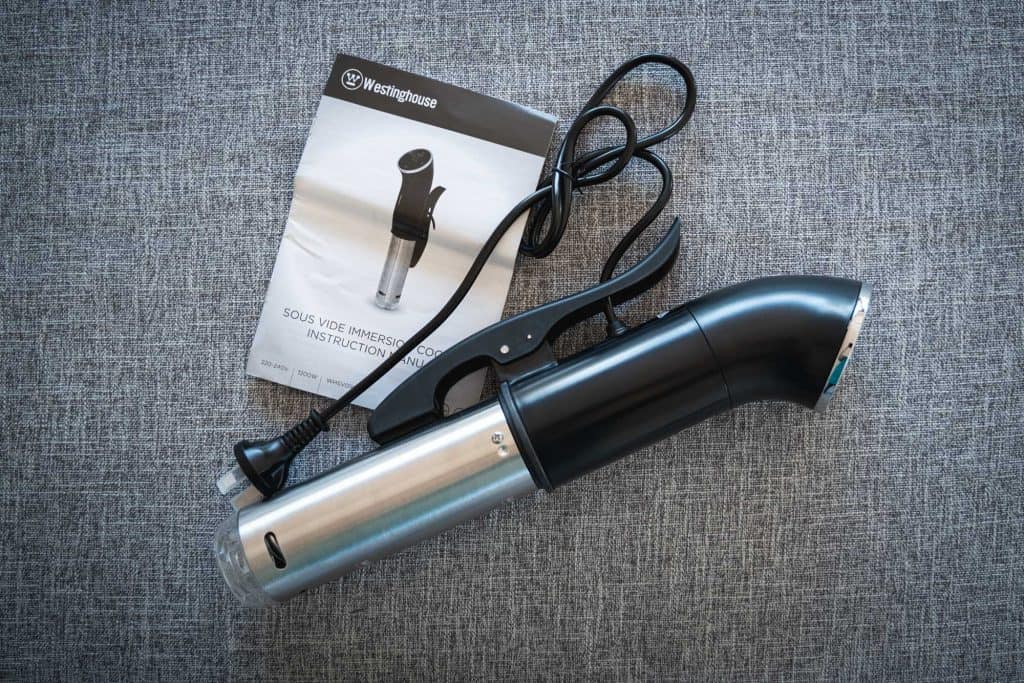
We would only recommend the Westinghouse sous vide immersion circulator if you’re living in New Zealand or Australia, can’t find better options available locally, and don’t have time to wait the 2+ weeks for one to arrive from an online order.
If you live in that part of the world but have time to wait, and want a device in the same price range, we recommend the Anova Culinary Sous Vide Precision Cooker (in the 220V option, so it will work with local power.) For a budget option, check out our list of the best sous vide immersion circulators. We recommend any of those over this one, and several come at a lower cost. Just make sure it can handle 220V power!
(A final note for our readers in Australia or New Zealand: you may find that not all of these products are available to ship. At the time of writing, though, we confirmed that all but one of our top picks were able to ship to these countries. However, we have not checked that all of them are compatible with 220V power, so please look into that before you waste money buying one that you won’t be able to use without an expensive transformer.)
Alternatives
For a similarly priced device: the Anova Culinary Sous Vide Precision Cooker. We love this WiFi-enabled immersion circulator for its perfect balance between price and function. (If you’re in NZ or Australia, make sure you get the 220V option.)
For home cooks on a budget: the Inkbird WiFi Sous Vide Cooker. It’s a great machine at a fantastic price. And even if you don’t love it for some reason, at least you’re not paying as much as you would for the Westinghouse. (This is not a great option if you’re in NZ or Australia, since it only comes in 110V power.)
No products found.

